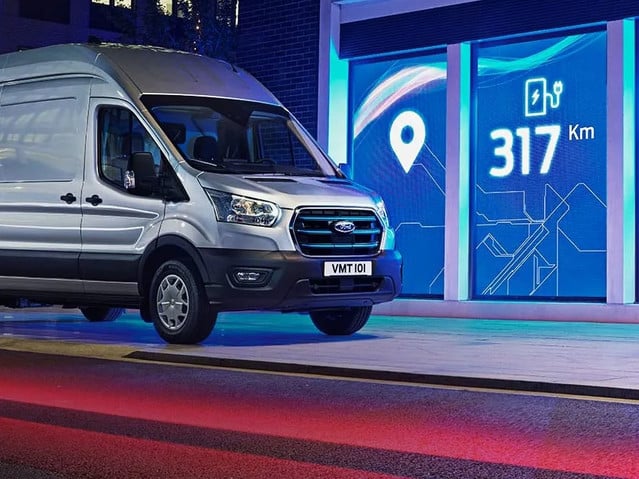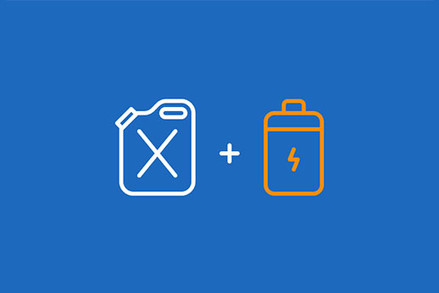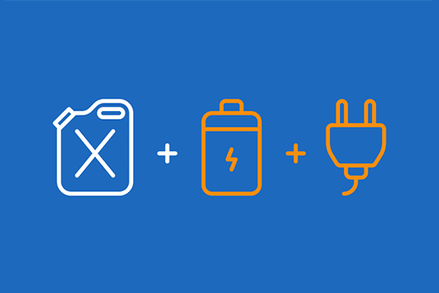
Hybrid & Electric Commercial Vehicles
Embrace the Future of Sustainable Transport Solutions
Our Guide to Transitioning Your Commercial Fleet to Electric Vehicles
As businesses increasingly prioritise sustainability and eco-friendly practices, the demand for hybrid and electric commercial vehicles has never been higher. Here at A.M. Phillip Trucktech, we understand the importance of embracing this green revolution while still providing reliable, high-performance vehicles that keep your operations running smoothly. That's why we're proud to offer a selection of cutting-edge electric and hybrid vans from renowned brands like IVECO, Ford, and Fiat Professional.
The Benefits of Buying an Electric Van
Embracing the shift to electric vehicles (EVs) brings a host of advantages for both your business and the environment. By opting for all-electric models, you significantly reduce your carbon footprint, as battery-powered vehicles produce zero harmful CO2 emissions during use. This eco-friendly choice not only minimises your impact on the planet but also helps your company meet its sustainability goals and enhance its corporate social responsibility (CSR).
In addition to the environmental benefits, going electric can result in savings for your business. Electricity costs are lower compared to petrol or diesel, meaning you'll spend less on fuelling your fleet. What's more is that EVs are exempt from costs such as road tax and congestion charges, which can add up quickly when managing multiple vehicles.
With the added benefits of lower maintenance requirements and potential government incentives, there has never been a better time to electrify your fleet and unlock the numerous advantages of this innovative technology.
How Does an Electric Vehicle Work?
An electric vehicle (EV) operates by storing electrical energy in a large, rechargeable battery pack, which powers one or more electric motors to propel the vehicle. When the driver presses the accelerator pedal, a power control unit converts the direct current (DC) electricity from the battery into alternating current (AC) electricity, which is then sent to the electric motor, or motors.
The motor or motors then convert this electrical energy into mechanical energy, turning the wheels and moving the vehicle forward. When the driver applies the brakes or takes their foot off the accelerator, the electric motor acts as a generator, converting the vehicle's kinetic energy back into electrical energy through regenerative braking. This energy is then stored in the battery pack for later use, helping to improve overall efficiency.
The battery pack also powers various auxiliary systems in the vehicle, such as lighting, climate control, and infotainment. EVs typically use a single-speed transmission, as electric motors can provide a wide range of torque and power across a broad range of speeds, simplifying the drivetrain compared to traditional internal combustion engine vehicles.
Where Can You Charge an Electric Vehicle?
There are several options available for charging your electric vehicle:
- Home charging: You can install a charging point at your residence, allowing you to conveniently charge your EV overnight or whenever it's parked at home.
- Workplace charging: Many employers offer charging facilities for their employees' electric vehicles, making it convenient to top up your battery while at work.
- Public charging networks: Across Scotland, there is a growing network of public charging points, including those provided by ChargePlace Scotland, the UK's largest public EV charging network. These charging points can be found at various locations, such as supermarkets and shopping centres, motorway service stations, car parks, leisure centres and tourist attractions, hotels and restaurants.
- Rapid charging stations: Rapid chargers, which can charge an EV much faster than standard charging points, are often located along major travel routes and at key destinations to facilitate long-distance travel.
- Destination charging: Many destinations, such as hotels, B&Bs, and tourist attractions, provide charging facilities for visitors, allowing you to charge your EV while enjoying your stay or visit.
To locate charging points in Scotland, you can use online tools and mobile apps like ChargePlace Scotland, or Zap-Map, which provide comprehensive maps and real-time information about charging point availability, type, and status.
Electric Range
Discover our full range of exciting new electric vehicles.
Key Benefits Include:
Electric and hybrid models offer many advantages when compared to traditional combustion engine models, namely:
 GreenerBy emitting zero - or low levels of - CO2, these vehicles have less harmful impact on the environment around us.
GreenerBy emitting zero - or low levels of - CO2, these vehicles have less harmful impact on the environment around us. FasterInstant torque is delivered by the electric motor, helping you achieve higher speeds in faster times.
FasterInstant torque is delivered by the electric motor, helping you achieve higher speeds in faster times. Cheaper to runElectricity costs are a fraction of petrol and diesel, while there are no road tax and congestion charges to pay.
Cheaper to runElectricity costs are a fraction of petrol and diesel, while there are no road tax and congestion charges to pay. More convenient to ownWith fewer moving components found in a combustion engine, maintenance issues are reduced.
More convenient to ownWith fewer moving components found in a combustion engine, maintenance issues are reduced. Soon to be cheaper to buy or leaseHaving more models on the market is driving prices down, making them more affordable to purchase.
Soon to be cheaper to buy or leaseHaving more models on the market is driving prices down, making them more affordable to purchase.
Types of Electric/Hybrid Models Explained
Find out more about the various options available when switching to electric/hybrid motoring







